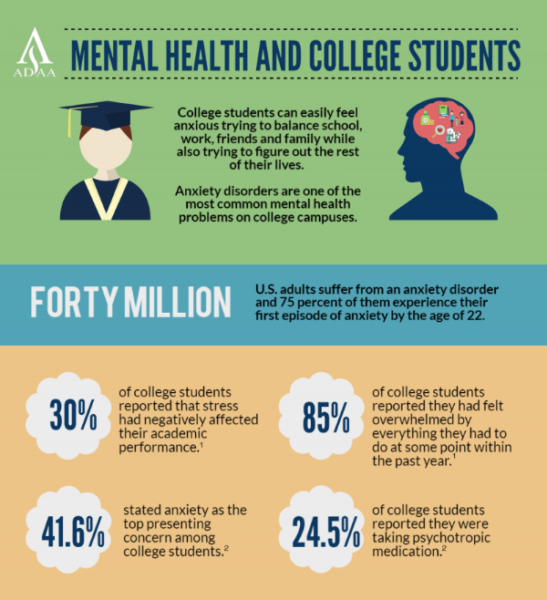By: Melissa Fraser, Staff Writer
Although the end of the semester is approaching, a challenging time for all, this reporter was the only person in attendance for the second of a three-part series held this month to help USM students manage stress and anxiety.
The session was held high up on the fourth floor of Bailey Hall on the Gorham campus by Rebecca Brainerd and Sarah Kelly, clinical counselors from Health and Counseling Services at USM. Called Calming Down: An Anxiety and Stress Workshop Series, the Friday afternoon sessions began on Nov. 2 and were to end on Nov. 16, had a winter storm not intervened. The first session was also sparsely attended; only two faculty members showed up, the presenters said.
Given the audience of a single reporter, Brainerd and Kelly used their second session to explain their goals: to build positive coping skills that help students, faculty and staff work toward a happier and calmer daily life. And yes, homework was assigned.
It’s not new, but the reasons for the human stress response have changed, Brainerd explained. Where once it would have been a saber toothed tiger that made your heart race and palms sweat, now it’s that class presentation. The fight-or-flight response is the same as its always been.
The fact that it occurs is normal, said Brainerd and Kelly. The solution is not to worry about being worried, but to recognize the signs and use coping skills to calm the body down.
Common physical manifestations of anxiety include dizziness, lightheadedness, quick and shallow breathing, sweating, tense muscles, a faster heartbeat, and a change in body temperature. Think final exam, the third of the day.
According to Brainerd and Kelly, it is unrealistic to believe that these symptoms can be stopped, but they can be countered.
One in-the-moment coping skill is simply breathing, with awareness. Here’s the technique Brainerd described: Take a gentle, deep breath in through the nose. Feel your diaphragm expand. Then slowly breathe out through your mouth.
To make the exercise even more effective, extend the exhalation two seconds longer than the inhalation. That tells the brain to relax.
As with all coping skills the breathing exercise is easier to do with practice. It can be done at any time. Like, now.
Another way to help your body withstand the rigors of academia is to establish regular sleep patterns. Brainerd defines good sleep hygiene as a consistent nighttime routine, falling asleep and waking up at the same time each day. Ideally this would happen seven days a week, or at least four to five.
What if you can’t get to sleep? Get out of bed, Brainerd said, step away from the phone, and find a strategy that works for you. It could be the breathing exercise, it could be reading or journaling, or listening to a sleep meditation podcast. Whatever eases you into sleep.
What if you can’t go to bed? What if you’ve got to pull an all-nighter?
Well, don’t sleep in the next day. It’s important to maintain a consistent schedule during the day, Kelly explained. Throwing a wrench into your sleep schedule also affects your eating habits and your exercise patterns, making it harder to fall asleep the next time you hit the pillow. And all of that weakens your body’s ability to deal with the everyday stressors of being a student.
Brainerd and Kelly cautioned, however, that students, staff and faculty should know the difference between everyday anxiety and anxiety disorder. The differentiator is the length of time that a person experiences symptoms, the presenters explained. Symptoms caused by stress and everyday anxiety go away when the stressor goes away, but with an anxiety disorder the symptoms remain even when there is no stressor present.
The most common disorders are social anxiety disorder, generalized anxiety disorder and posttraumatic stress disorder. According to the Anxiety and Depression Association of America (ADAA), an estimated 40 million Americans age 18 and older live with some form of an anxiety disorder.
For most of us, though, the challenges of student life are manageable. Practice helps. About that homework, try this: Take out a blank sheet of paper and write down moments that you felt anxious or stressed. Step one is recognizing when it happens. Step two is preparing yourself to cope.
And remember, don’t worry about being worried.

